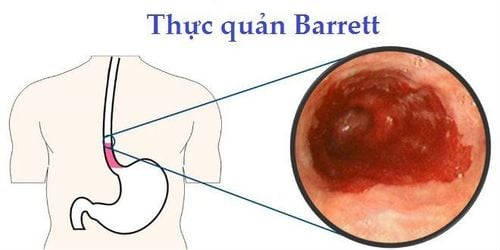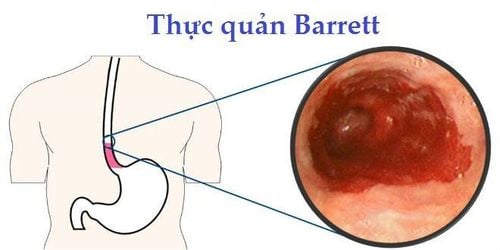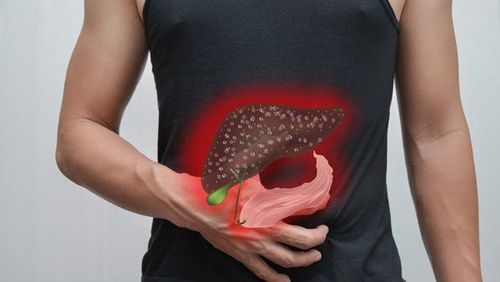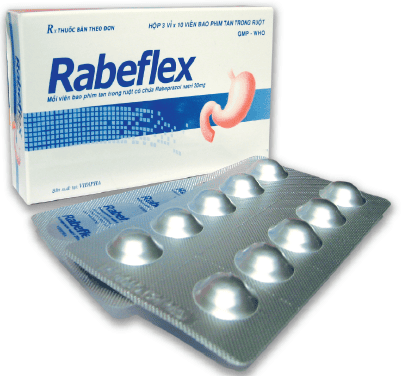This is an automatically translated article.
The article was professionally consulted by Doctor Department of Gastroenterology - Endoscopy, Department of Medical Examination & Internal Medicine - Vinmec Central Park International General Hospital.
Barrett's esophagus is a digestive disease that often occurs in people with long-term acid reflux. Barrett's esophagus can increase the risk of esophageal cancer, greatly affecting the patient's health.
1. What is Barrett's esophagus?
Barrett's esophagus is a lesion in the lower third of the esophagus. The disease is named after Dr. Barrett, who first described it.
Normally, the epidermal cells of the esophagus are composed of squamous cells that are pinkish-white in color. Barrett's esophagus cylindrical cells are tall and red, similar to the mucosal cells of the stomach.

2. What is esophageal cancer?
The esophagus is a smooth muscular tube that transports food and liquid from the neck to the stomach. The wall of the esophagus consists of 3 layers: the mucosal layer (mucous membrane), the muscular layer, and the connective tissue. Esophageal cancer usually occurs in the mucosal layer and gradually grows, invading the muscle layers and connective tissue layers. The two most common types of esophageal cancer are:
Squamous cell carcinoma: Cancer that begins in the squamous cell layer, the thin, flat cells that line the inside of the esophagus. Squamous cell carcinoma is most common in the upper and middle parts of the esophagus, but can start anywhere along the esophagus; Adenocarcinoma: Cancer that begins in the cells of the mucus-secreting glands, usually in the oesophagus, near the stomach.
3. How dangerous is Barrett's esophagus?

Although the cell changes in Barrett's esophagus are not cancerous, they are more likely to turn cancerous than normal esophageal cells.
Cellular changes in Barrett's esophagus can develop into dysplasia, which is highly cancerous, which is considered precancerous. There are many degrees of dysplasia, from mild dysplasia to severe dysplasia. The more severe the dysplasia, the higher the risk of turning into cancer.
The probability of progression of Barrett's esophagus to dysplasia and cancer is low. Most cells remain constant and do not progress. The annual rate of newly diagnosed esophageal cancer in patients with Barrett's esophagus is 0.5%, which is 40-50 times higher than that of normal esophageal mucosa.
Please dial HOTLINE for more information or register for an appointment HERE. Download MyVinmec app to make appointments faster and to manage your bookings easily.













